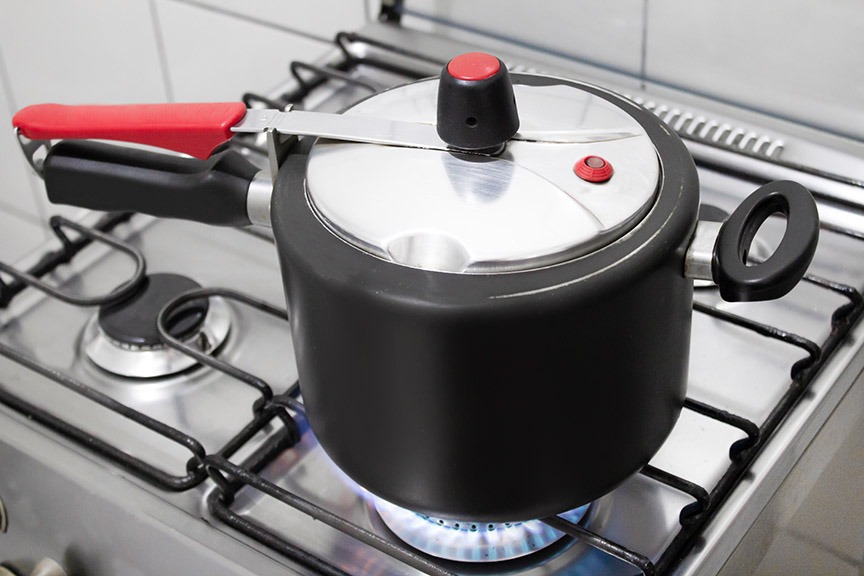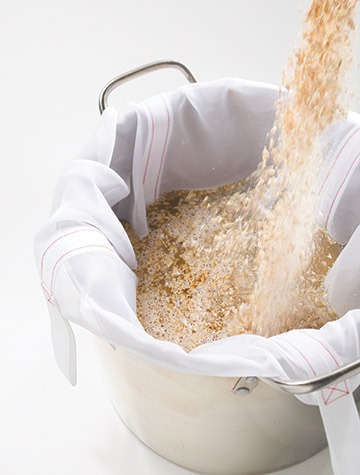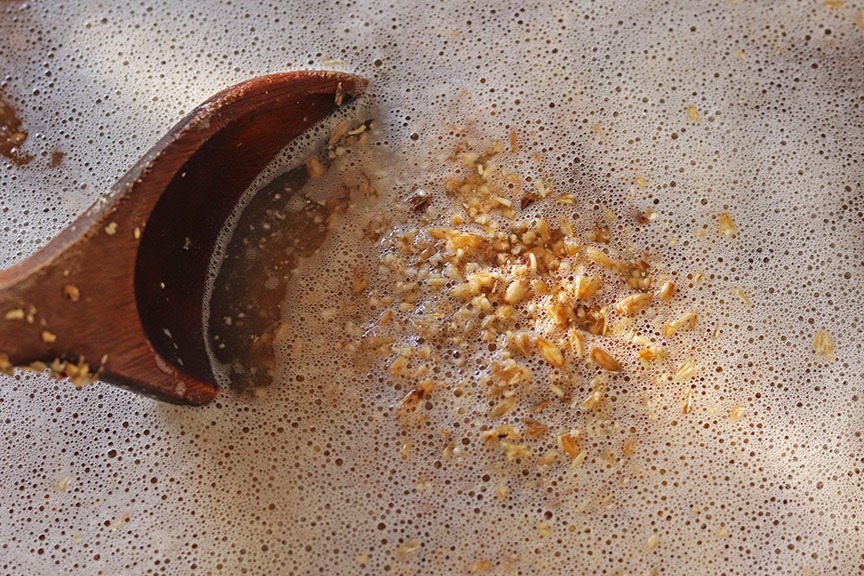Sorting the Facts: A deep dive into mash pH
Current homebrewing lore has it that ideal mash pH is in the range of 5.2–5.6. This simple fact is, in fact, not at all simple. It is thus worth a deep dive into two questions: What exactly do these numbers mean, and what is their scientific basis? I’ll answer these questions by addressing four interrelated topics: (i) Standard practice when reporting measured pH values, (ii) The shift in pH when wort is cooled from mash temperature (MT) to room temperature (RT), (iii) The automatic temperature compensation (ATC) feature of a pH meter, and (iv) Most importantly, the goals of a successful mash.
Standard Practice?
As wort cools from a standard infusion MT of ~152 °F (67 °C) to RT at ~68 °F (20 °C), the pH of the wort increases. This scientific fact underpins much of the confusion regarding mash pH values. Reported values might be for measurements made at MT or RT, but unfortunately the corresponding temperature is not always explicitly stated. An archetypal example of such temperature neglect can be found in Gregory Noonan’s excellent New Brewing Lager Beer. In the section where Noonan discusses the impact of pH on mash chemistry there is nary a hint regarding measurement temperature.

One might infer that such lack of measurement-temperature reporting arises from a standard procedure that includes a standard temperature. Indeed, John Palmer and Colin Kaminski in their book Water are rather adamant when they state “ . . . brewers always refer to pH measurements at room temperature.” On the face of it, this statement would appear to be in agreement with Jean De Clerck who, in his 1948 two-tome classic Cours de Brasserie, is very clear that all quoted pH values were made on cooled wort. However, the need for De Clerck to make this point suggests uncertainty regarding this question existed at least 70 years ago. Indeed, in Brewing Science and Practice by Dennis Briggs et al. the authors state, “A major difficulty follows from the habit of measuring the pH of worts or mashes at room temperature and assuming that these values apply at higher temperatures, when they do not.” With this statement Briggs et al. appear to recognize many, if not most, measurements are carried out at RT, but at the same time they acknowledge confusion when assessing the literature. This is apparent in their Table 4.9, where they must question the temperature at which a number of the tabulated readings were made. While RT measurements may indeed be more common than those at MT — and there are certainly brewers who argue this is the convention, this practice is by no means universal. For example, in her entertaining seminar “Czech Plz! What I Learned Brewing with the Czech Masters” at Homebrew Con 2017, Annie Johnson reports Pilsner Urquell is mashed at a pH of 4.7 to 4.9. The discussion below strongly implies these values are for an elevated temperature.
So what is the takeaway? No doubt useful measurements can be made at MT or RT; it is entirely up to each brewer to develop a suitable brew day process. However, it is highly recommended that pH measurements be made at RT. The reasons are related to pH-probe specifications and performance. First, many probes have a specified temperature range with a maximum of only 122 °F (50 °C), well below that of a typical MT. Second, even though one can purchase probes with an upper-temperature limit that includes MTs, a probe lifetime generally decreases when used at elevated temperatures. A rule of thumb is that a pH probe’s lifetime is reduced by a factor of 2 for every 45 °F (25 °C) increase in temperature. Thus, even if a probe is rated for MTs, its lifetime is likely to be reduced by a factor of ~4 if used at MT. As we shall see by the end of this article, the range of 5.2–5.6 put forth in the introduction is indeed for RT measurement of cooled wort.
pH Shift with Temperature
The preceding discussion prompts us to ask by how much does wort pH change as it is cooled from ~153 °F (67 °C) to ~68°F (20 °C)? If there were a nice single value, then we could just apply that number to a RT measurement and thereby obtain an equivalent MT value (or vice versa). Oh, if it were so easy! The problem is the shift in pH between MT and RT is not the same for all mashes.
A rule of thumb is that a pH probe’s lifetime is reduced by a factor of 2 for every 45 °F (25 °C) increase in temperature.
In researching this topic I found reports of a number of actual measurements, which I summarize here. In their Table 4.8 Briggs et al. compile data from R. H. Hopkins and B. Krause, Biochemistry Applied to Malting and Brewing, which show pH increases of 0.34 and 0.33 for mashes made with distilled and carbonated water, respectively. Water guru Martin Brungard, on his “Water Knowledge” webpage, states the increase is in the range of 0.2 to 0.3. Jordon Geurts from Briess, in his presentation “Specialty Malt Acidity,” reports shifts of 0.37 for kilned malt, 0.26 for roasted malt, and 0.38 for dark roasted malt. A. J. deLange, in the paper “Predicting and Controlling Mash pH Using Simple Models for Mash Component Acid/Base Characteristics,” states “ . . . the increase seems to be 0.0055 pH/°C . . . ”. This rate translates to a pH increase of 0.26 between MT and RT. The moral here is that the pH shift between MT and RT for any given mash could be anywhere from ~0.2 to ~0.4. The exact value will depend upon the malts that make up the grist, as directly shown by Geurts. The two different values from the Hopkins/Krause data also suggest water alkalinity may play a minor role in the temperature dependence of the mash.
Automatic Temperature Compensation
Let’s be clear: The ATC circuitry of a pH meter has nothing to do with the temperature dependence of wort pH. Unfortunately, these distinct topics are sometimes conflated, leading to confusion with regard to the role of ATC.
The purpose of ATC is to enable more accurate pH measurements. In order to understand what ATC does, we need to understand what a pH meter measures. As with essentially any electronic instrument, a potential difference V (i.e., a voltage) is the quantity actually measured. Digital circuitry within the instrument then interprets the voltage to produce an output; a pH meter’s output is obviously a pH value. The key to ATC being so useful is the fact that the relationship between pH and measured probe voltage is temperature dependent. The relevant relation is the Nernst equation, which for our purposes can be written as:
V = C x T (pH0 − pH)
where C is a constant, T is temperature in Kelvin, and pH0 is the pH of the reference solution contained within the probe. Ideally pH0 = 7. The important aspect of this equation is that V is proportional to temperature. So if the meter is calibrated at one temperature Tc and the sample temperature Ts is different, then a meter without ATC will report an incorrect value of pH. Starting with the Nernst equation it is straightforward to show that the systematic error in pH measurement ∆pH is related to the temperature difference ∆T = Ts − Tc via
∆pH = [(pH0 – pHs)/ Tc] x ∆T
where pHs is the pH value reported by the meter when the sample is measured. The ATC circuitry corrects for the error ∆pH and enables the meter to output a more accurate value.
So how big is this error for a typical measurement of wort pH? If the meter is calibrated near RT (Tc ≈ 293 K) and measured pH values are close to 5.4, then ∆T = 18 °F (10 °C) results in ∆pH ≈ 0.05. Admittedly, this error is rather small, and so if mash pH values near RT are the only pH values of interest, then ATC might not be worth the extra expense. On the other hand, if one’s goal is to measure pH at MT, then ATC is essential. Additionally, the equation for ∆pH shows the error scales as the difference between pH0 and pHs, so smaller values in pHs result in larger errors. ATC may thus be worthwhile for the homebrewer who wants to assess the pH of a Berliner weisse, for example.
Optimum Mash pH
The overarching goal of a brewer’s mash is to produce a sweet wort that — when fermented — results in beer with the best possible taste. A number of processes that take place during the mash contribute to this goal.
First and foremost is the reduction of starch to some combination of dextrins and fermentable sugars. One might therefore surmise optimum mash pH is in the range that maximizes extract yield along with good fermentability of the wort. Various sources report pH values that optimize these two outcomes; the data are summarized in Table 1. Based on the data in the table, we can surmise a RT measured pH range of ~5.4–5.8 is an optimal target for maximizing both extract and fermentability.

So why isn’t 5.4–5.8 the optimal range? Well, pH impacts other aspects of the beer making process. Both the total soluble nitrogen (TSN) and free amino nitrogen (FAN) are optimized at somewhat lower values of pH. Other outcomes that are enhanced at slightly lower values of mash pH include increased beer clarity, reduced beer color, and less harsh hop bitterness.
However, perhaps the most compelling reason for targeting mash pH in the slightly lower range of 5.2–5.6 is best explained by John Palmer in his 2018 Homebrew Con talk, where he notes “Mash pH sets up beer pH.” A high (or low) mash pH tends to result in a relatively high (or low) beer pH. The importance of this is that beer pH can have a dramatic impact on perceived beer flavor. In his talk Palmer discusses extensive evaluations that professional brewer Colin Kaminski did on the correlation of beer pH and flavor. Kaminski concludes that changes in pH of 0.2 are readily apparent in the flavor of pale ales, with a beer pH of 4.2 yielding optimum flavor for these beers.
Other brewers are in essential agreement with Palmer regarding 5.2–5.6 being the optimum range. Joe Walts is a professional brewer with a keen interest in pH. Referring to RT measurements, he states in his talk at the 2016 Midwest Regional Brewers Conference: “I target a mash pH of 5.35, I’m happy with measured values of 5.2–5.5, and actual measured values are 5.3–5.4.” A. J. deLange, who has for years generously answered an uncountable number of questions regarding mash pH, is succinctly quoted on one homebrewing forum [15] “. . . I will say that the biggest single improvement in my brewing in the last five years or so came when I started actively controlling pH to between 5.3 and 5.4 (room temperature) rather than just monitoring it.” Martin Brungard, again on his “Water Knowledge” webpage, presents a table with recommended RT mash pH ranges for enhancing particular beer characteristics: all of his recommendations fall within the range of 5.1 to 5.6.
As homebrewers, how we can best use this pH information? If one has never paid attention to mash pH, then simply targeting mash pH within the range of 5.2–5.6 may bring substantial benefits. However, controlling mash pH at a finer level can be used to dial in a particular recipe, given that adjustments within this range influence final beer pH and thus impact beer flavor. For example, it is often claimed that dark beers benefit from the upper end of this range, while pale beers benefit from the lower end. From a sensory point of view this makes sense: A bit of enhanced sharpness afforded by relatively lower pH will likely benefit a Pilsner or IPA much more than a porter or stout. Of course, taste is on the tongue of the brewer, so this rule of thumb should be treated as such. Lastly, I note that if the base malt contains a large percentage of low-diastatic-power malt, such as Munich, then a mash pH within the maximum extract range of 5.4–5.8 may be preferable. Otherwise, full conversion of the available starches might not occur.
So may your mash tun stay warm, your pH be right, your beer remain cold, refreshing, and bright. Happy mashing!
References
[1] Greg Noonan. New Brewing Lager Beer. Brewers Publications; Boulder, CO, 1996.
[2] J. K. Palmer and C. Kaminski. Water, A Comprehensive Guide for Brewers. Brewers Publications, Boulder, CO, 2013.
[3] Jean De Clerk. Cours de Brasserie. Van Linthout, Louvain, France, 1948.
[4] D. E. Briggs, C. A. Boulton, P. A. Brookes, and R. Stevens. Brewing Science and Practice. CRC Press; Boca Raton, FL, 2004.
[5] Annie Johnson. “Czech Plz! What I Learned Brewing with the Czech Masters,” https://www.homebrewersassociation.org/seminar/czech-plz-what-i-learned-brewing-with-the-czech-masters/. Homebrew Con, Minneapolis, MN, 2017.
[6] R. H. Hopkins and B Krause. Biochemistry Applied to Malting and Brewing. Allen & Unwin, London, 1947.
[7] Martin Brungard. “Water Knowledge,” https://www.brunwater.com/water-knowledge.
[8] R Hansen and J. Geurts. “Specialty Malt Acidity”. MBAA Annual Conference, Jacksonville, FL, 2015.
[9] A. J. deLange. “Predicting and Controlling Mash pH Using Simple Models of Mash Component Acid/Base Characteristics”. MBAA Technical Quarterly 52, 3 – 12, 2015.
[10] “A Guide to pH Measurement – Theory and Practice of pH Applications,” https://alliancets.com/images/alliancets/PDF/Resources/Guide-to-pH-Measurement-Jan-2018-Alliance-Tech-Sales.pdf. Mettler Toldeo, 2016.
[11] C. W. Bamforth. “pH in Brewing: An Overview”. MBAA Technical Quarterly, 38:1–9, 2001.
[12] Kai Troester. “Evaluation of the Effect of Mash Parameters on the Limit of Attenuation and Conversion Efficiency in Single Infusion Mashing.” 2008.
[13] J. Palmer. “Putting Brewing Water in Perspective”. Homebrew Con, Portland, OR, 2018.
[14] J. Walts. “Brewhouse Water and Mash pH Control”. Midwest Regional Brewers Conference, Minocqua, WI, 2016.
[15] American Homebrewers Forum. Topic: Controlling pH. “https://www.homebrewersassociation.org/forum/index.php?topic=3657.0”.






